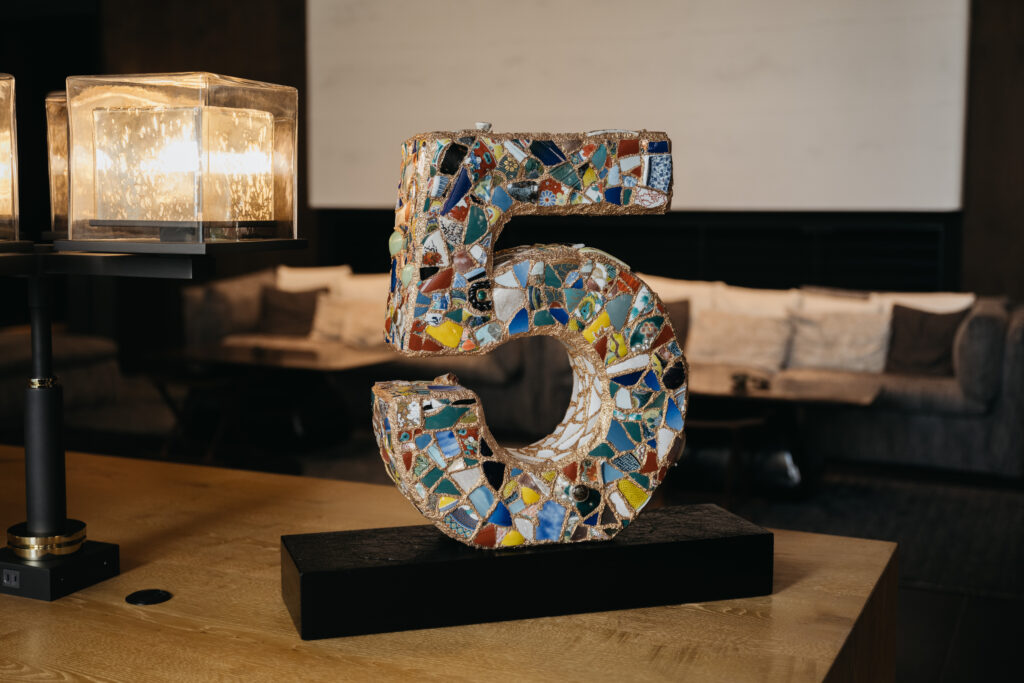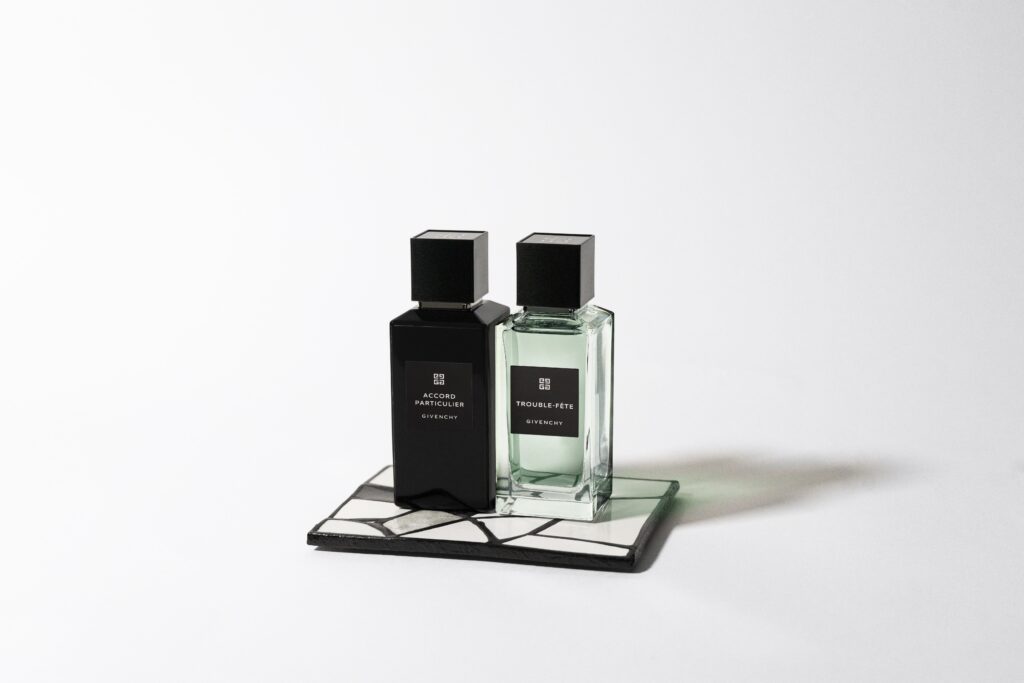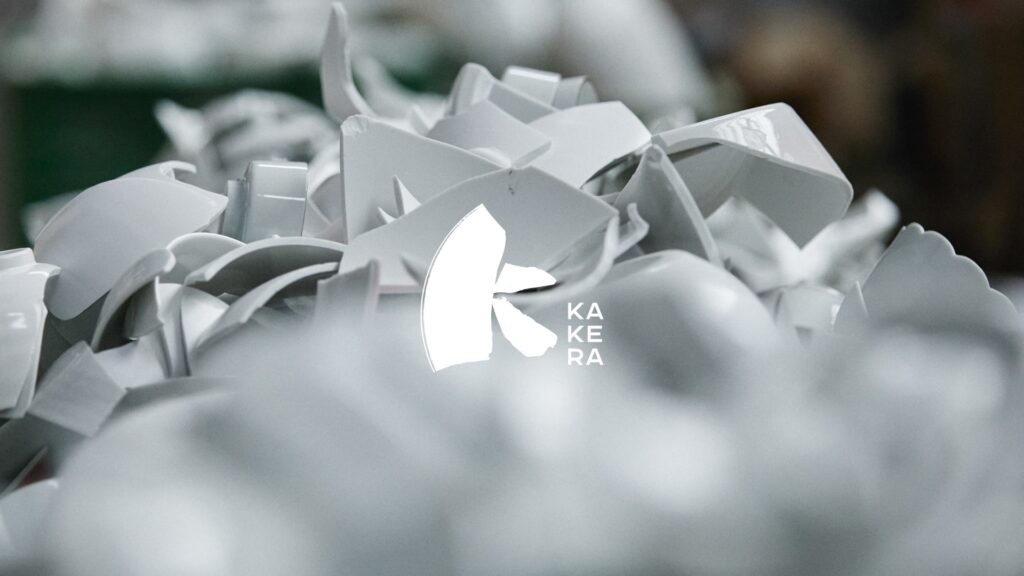Topics お知らせ
CACL × LIXIL × Yuko Nagayama & Associates Announce a Joint Project to Preserve and Carry Forward the Traditional Landscapes of Noto into the Future
September.01.2025
Upcycling Earthquake-Damaged “Black Roof Tiles” into Building Materials for New Architectural Creations
On September 1, 2025, CACL Inc. (hereinafter “CACL”), LIXIL Corporation (hereinafter “LIXIL”), and Yuko Nagayama & Associates Inc. (hereinafter “Yuko Nagayama & Associates”) launched a joint project to upcycle black roof tiles, once used in houses destroyed by the 2024 Noto Peninsula Earthquake, into building materials for new architectural projects.
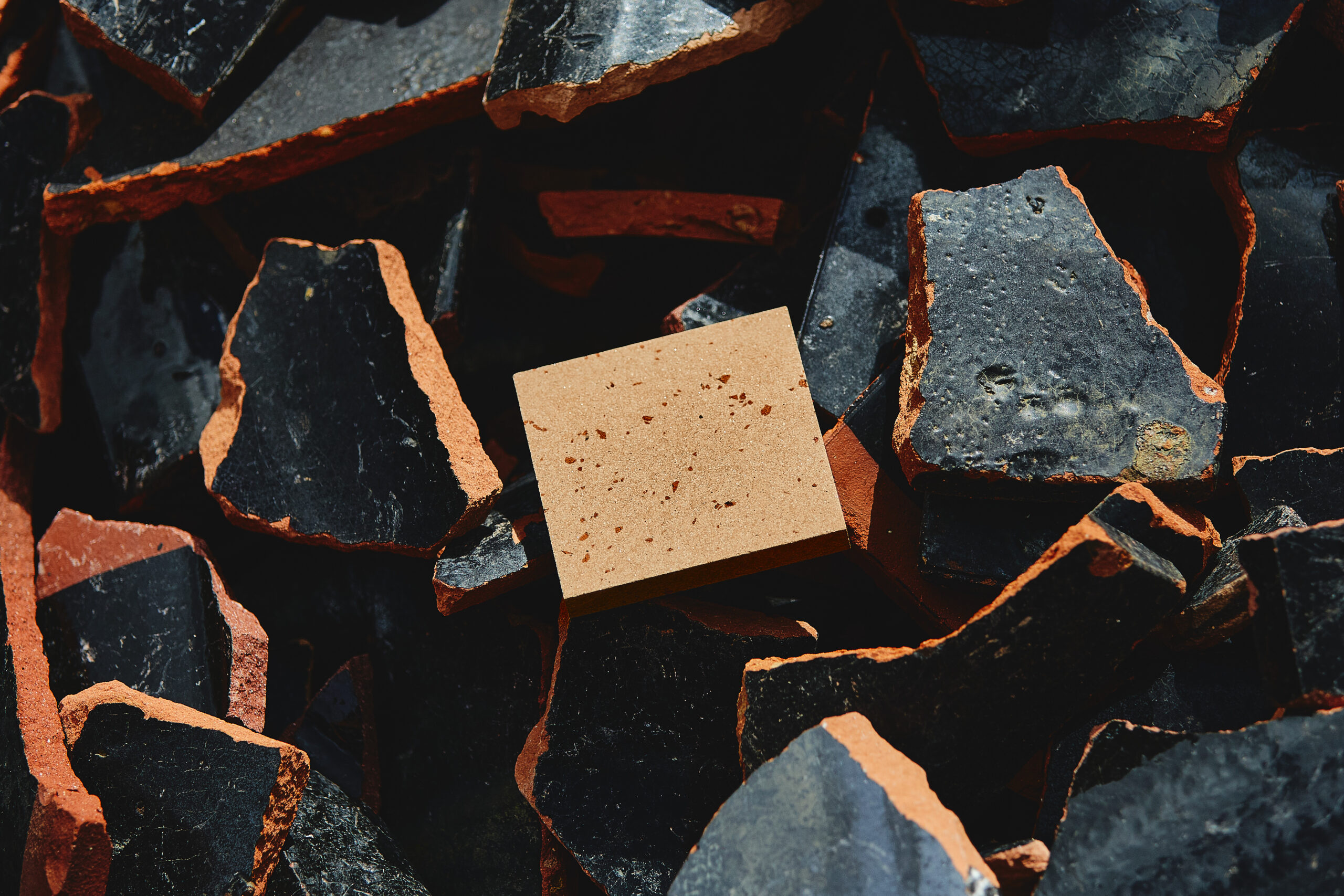
Project Overview
This project is a comprehensive initiative that treats the “black roof tiles” used in houses completely or partially destroyed by the Noto Peninsula Earthquake not as waste, but as symbols of “creative recovery.” By upcycling these tiles into building materials, the project seeks to carry forward the sentiments and memories of Noto into the future.
At present, homes that were fully or partially destroyed by the Noto Peninsula Earthquake are being dismantled through government-funded demolition※. In this process, contractors separate the materials, which are then sent to regional collection sites before ultimately being discarded at disposal facilities across the country. In contrast, this project—initiated by CACL, a company originating in Ishikawa Prefecture, in collaboration with LIXIL, which possesses advanced technologies for resource recycling and diverse building materials, and Yuko Nagayama & Associates, renowned for its architectural designs—brings together the strengths of the three companies to establish a framework for upcycling the “black roof tiles” from government-demolished houses into new building materials.
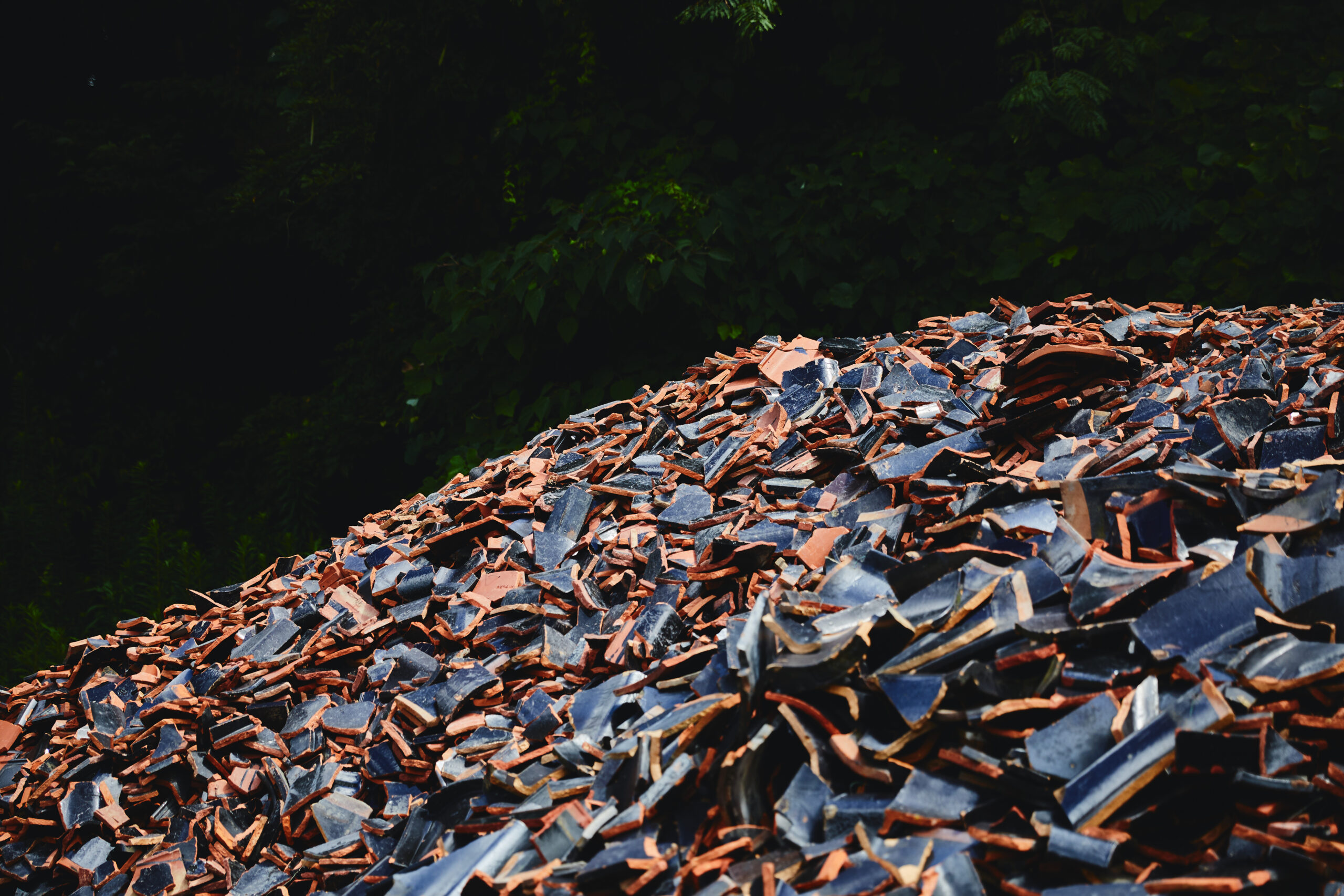
※ Government-Funded Demolition: A system under which municipalities, upon request from property owners, carry out the demolition and removal of houses (including residences, vacant homes, barns, and other structures) that sustained partial or total destruction in the 2024 Noto Peninsula Earthquake.
Specifically, the black roof tiles collected during government-funded demolition will be crushed by designated contractors, then purchased and stored by CACL, thereby transforming them into valuable resources. Using LIXIL’s technology, these resources will be processed into building materials that retain the unique texture and character of the original tiles. Finally, under the direction of Yuko Nagayama & Associates, these materials are intended to be incorporated into various outputs—such as architectural structures and interior designs.
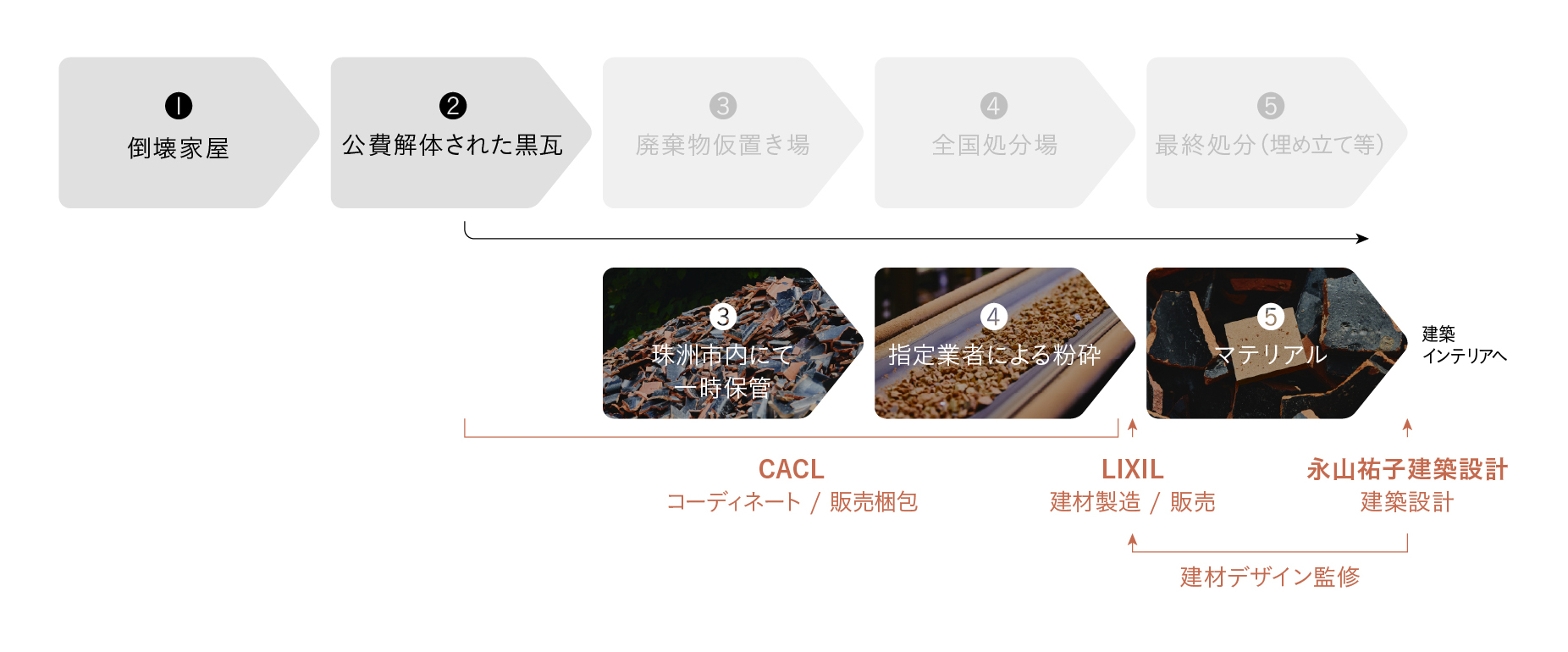
Background
Junichi Okuyama, President of CACL, has long pursued activities aimed at “crossing boundaries set by others to discover new value.” While engaged in on-the-ground recovery support immediately after the earthquake, he encountered the “black roof tiles.” Captivated by the striking contrast between their deep, heavy black surfaces and the vivid orange revealed in their fractured cross-sections, he envisioned transforming them into a symbol of creative recovery—an emblem that could carry the sentiments and memories of the community into the future.
Around the same time, both LIXIL and Yuko Nagayama & Associates had been addressing the broader challenge of upcycling building materials, exploring new possibilities through cross-industry collaboration. United by the vision of regenerating “black roof tiles” as a symbol of creative recovery, and with the cooperation of Suzu City, the three parties came together to bring this project to life.
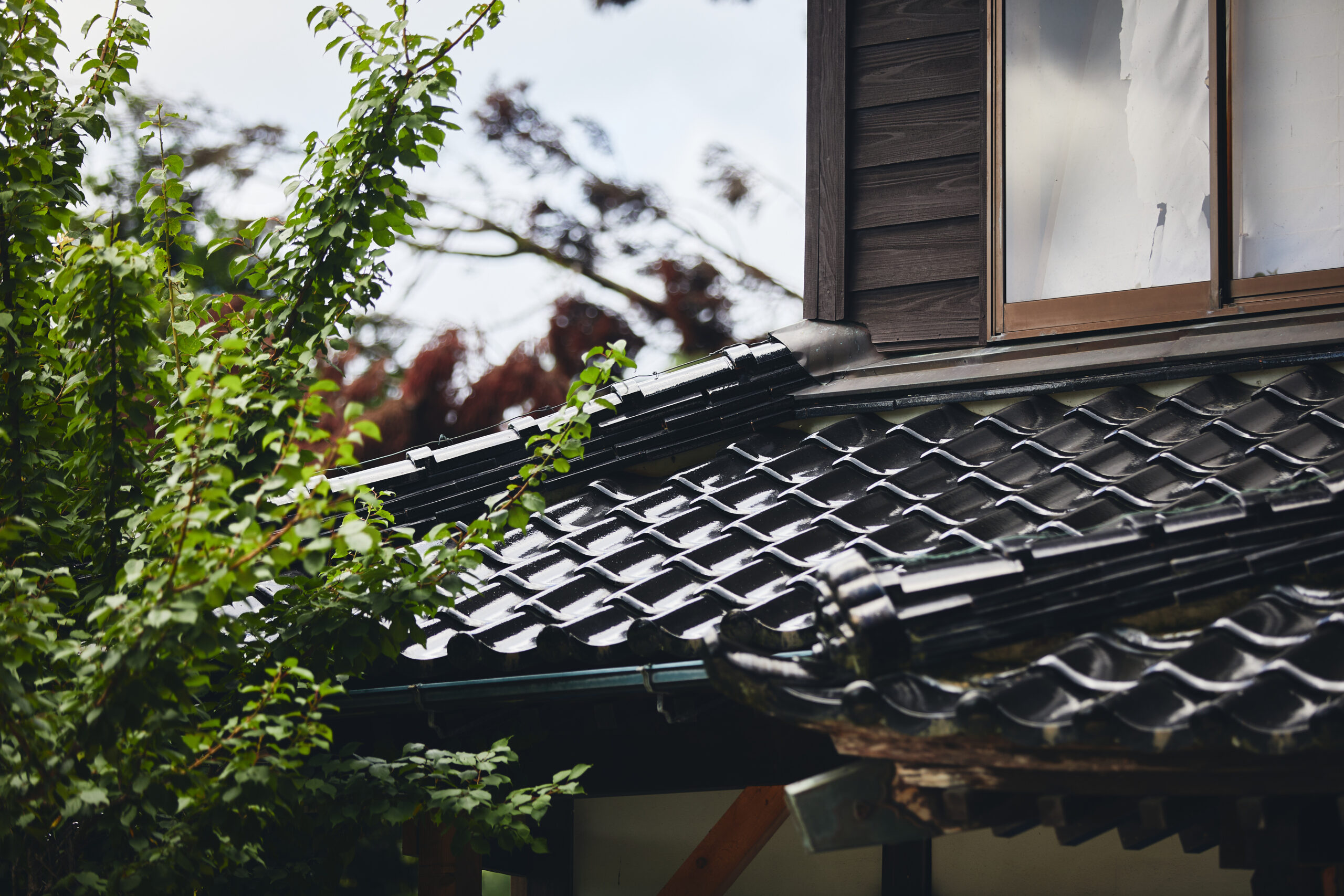
Material Details
Fragments of black roof tiles are used as raw material for LIXIL’s original decorative building material textone, which incorporates natural-derived substances as design elements. Developed as a special “Noto Tile Edition,” this material highlights the gentle orange hue inherent in the tile fragments—distinct from the strong, dark impression of the tiles’ original surfaces—creating a soft and warm coloration. Thanks to textone’s unique technology, which preserves a certain granular texture, the landscape once shaped by Noto’s black roof tiles can be visually embodied in a tangible form.
※ For more details on textone itself, please refer here.
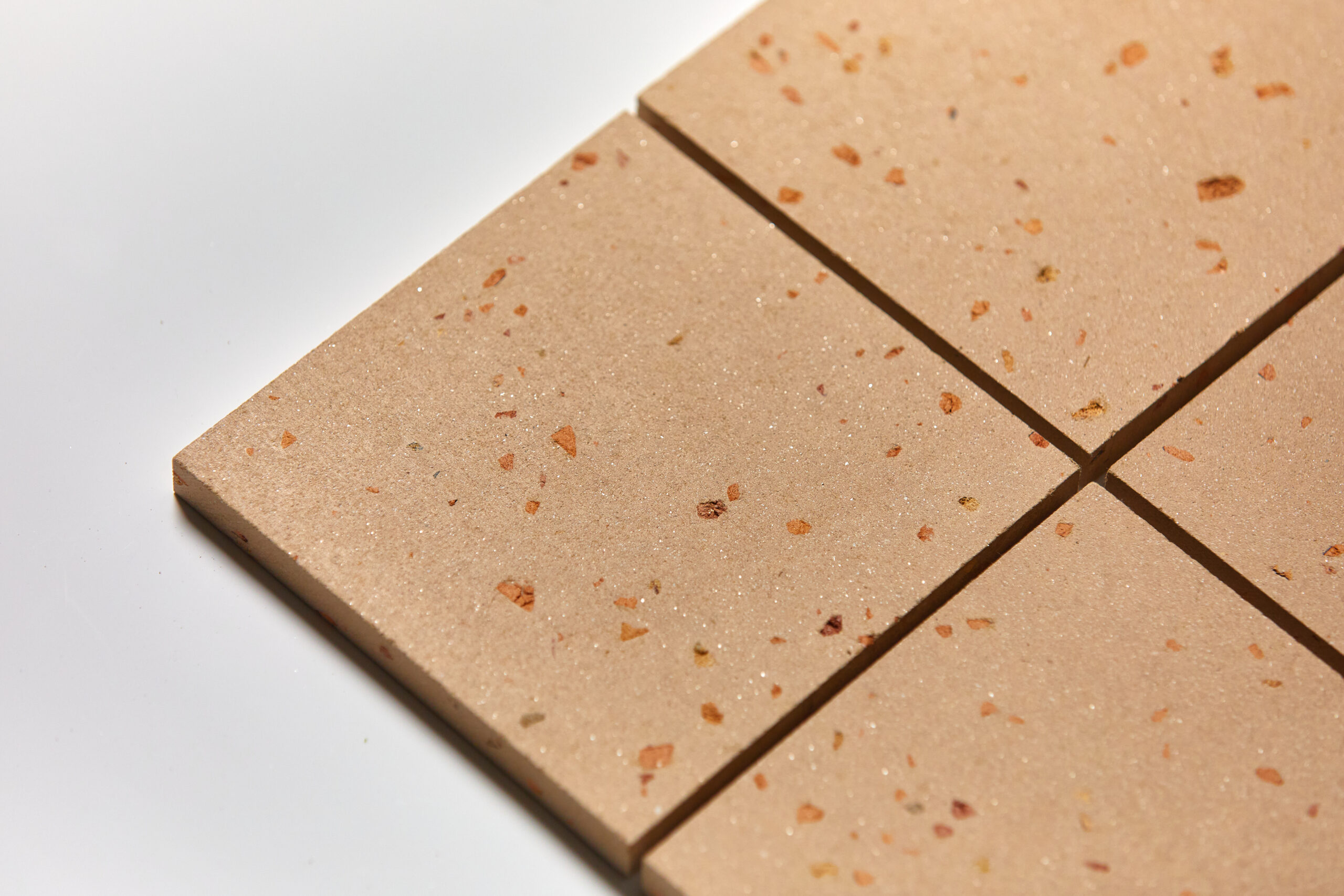
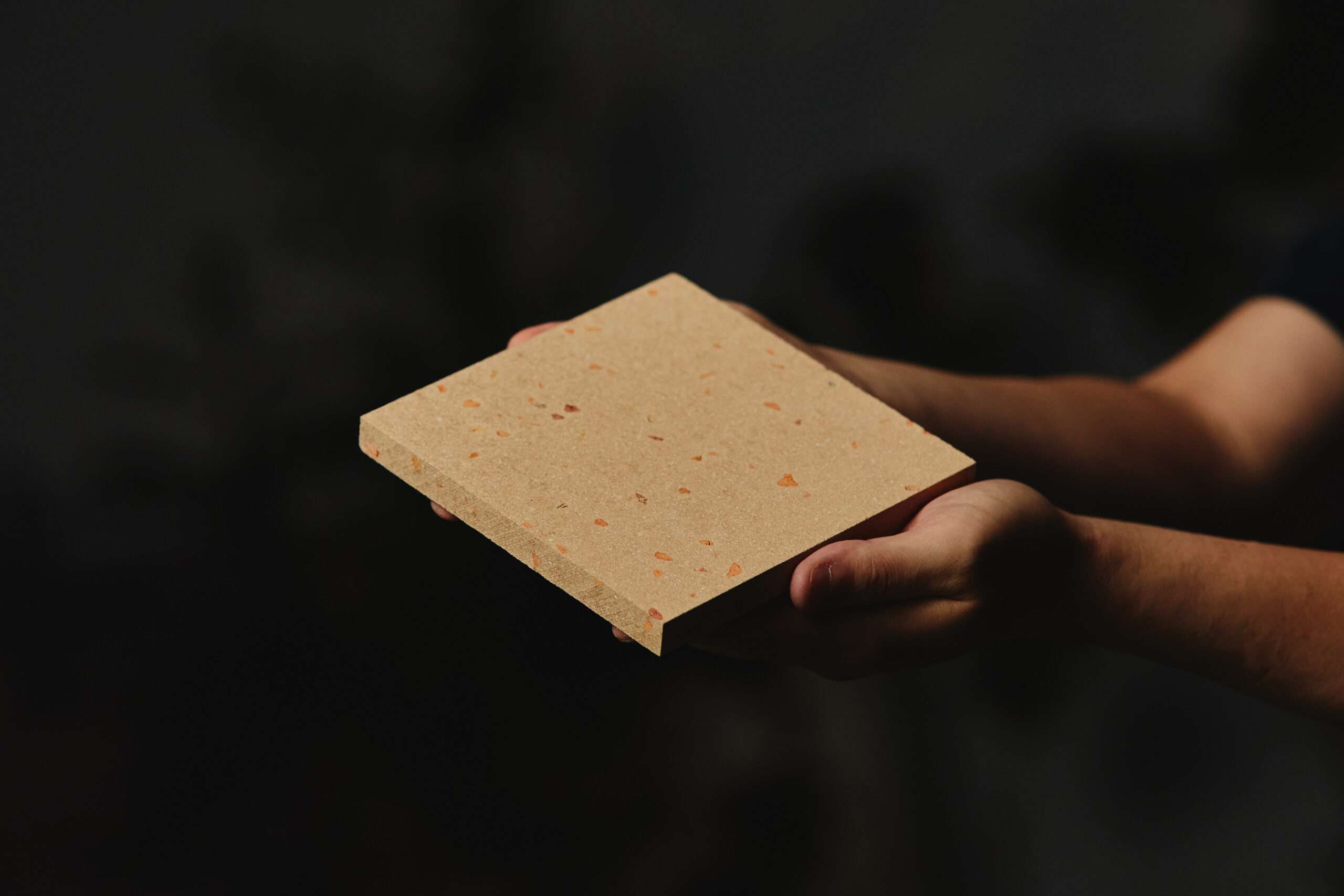
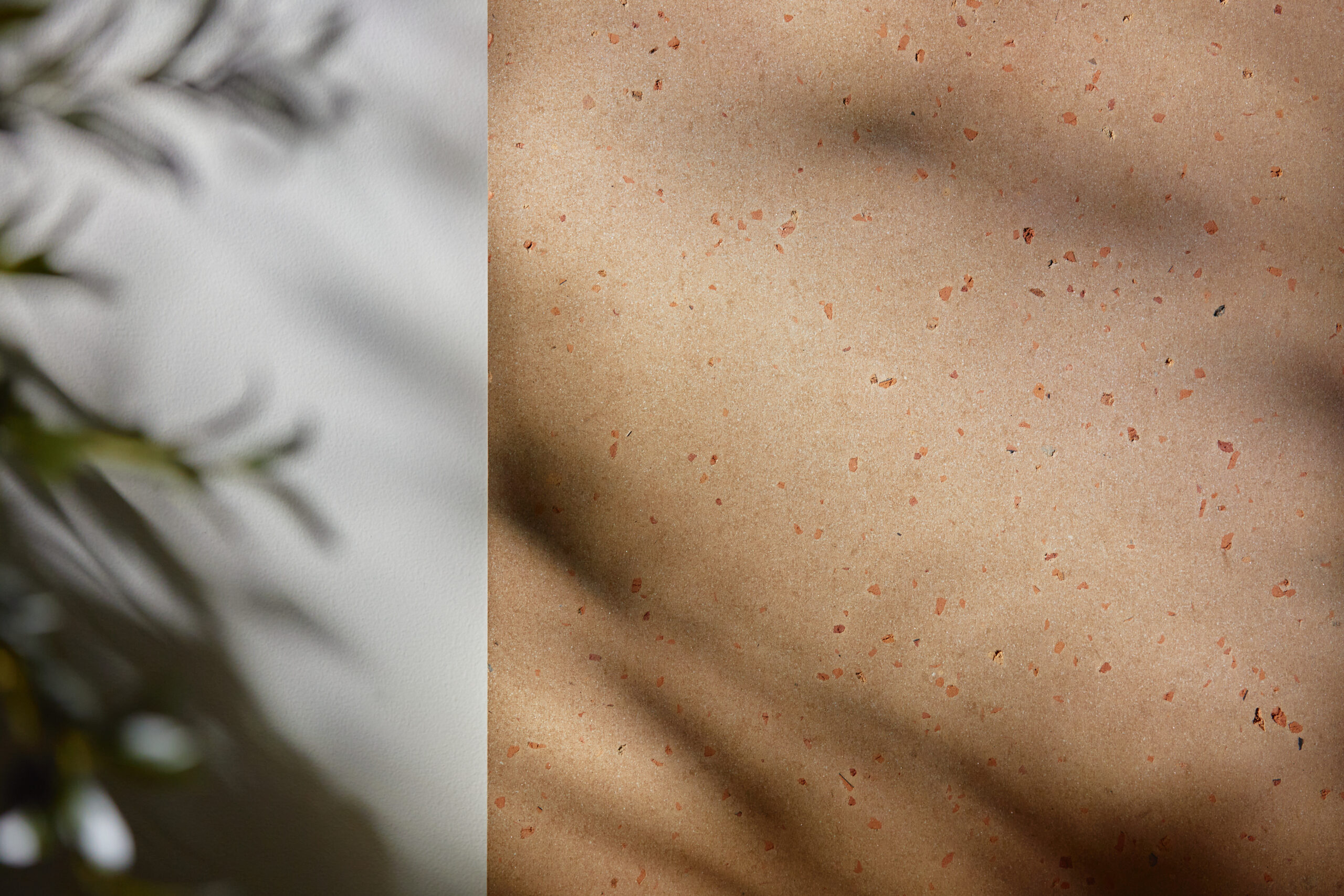
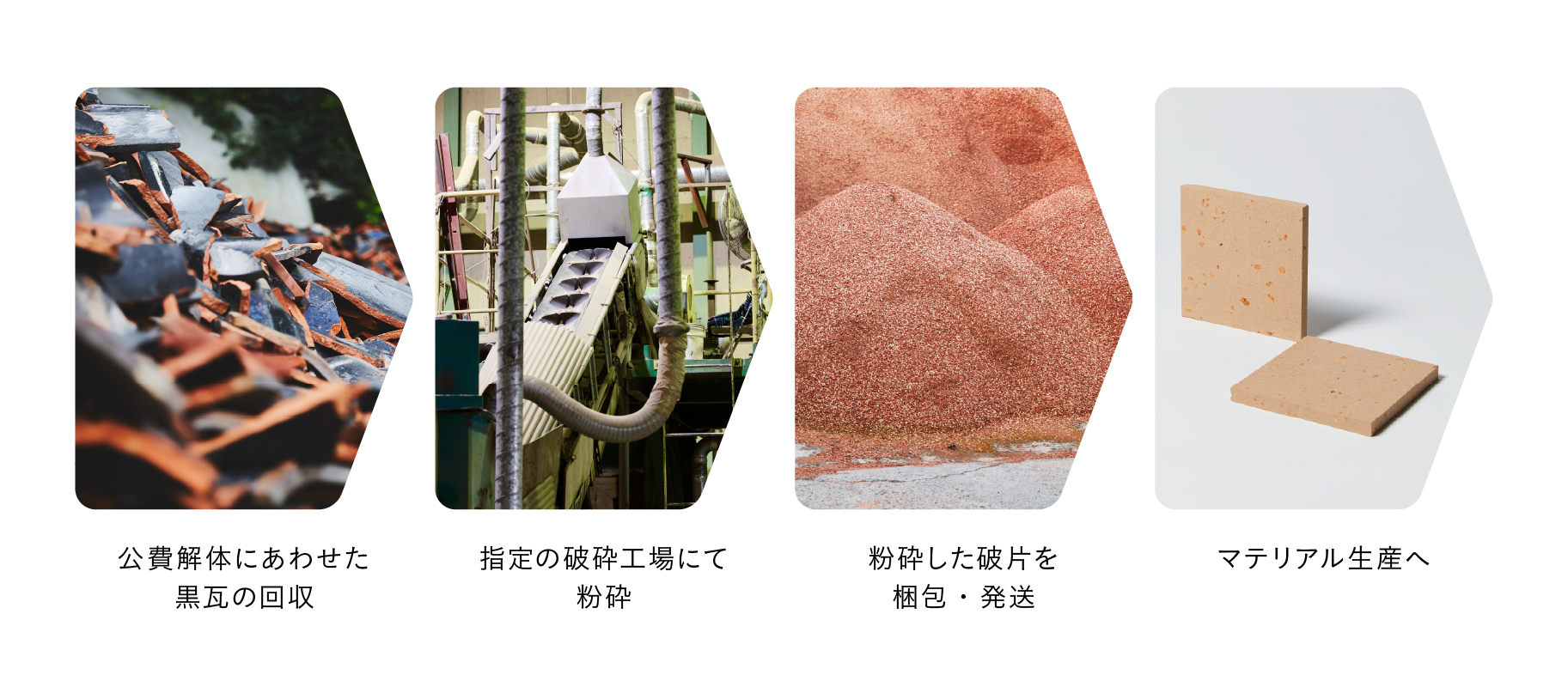
Looking Ahead
The project has already begun experimental production of materials. Moving forward, the aim is to upcycle these into concrete applications such as architectural projects. In particular, we hope to collaborate with partner companies to ensure that the outcomes of this initiative are returned to and benefit the local community.
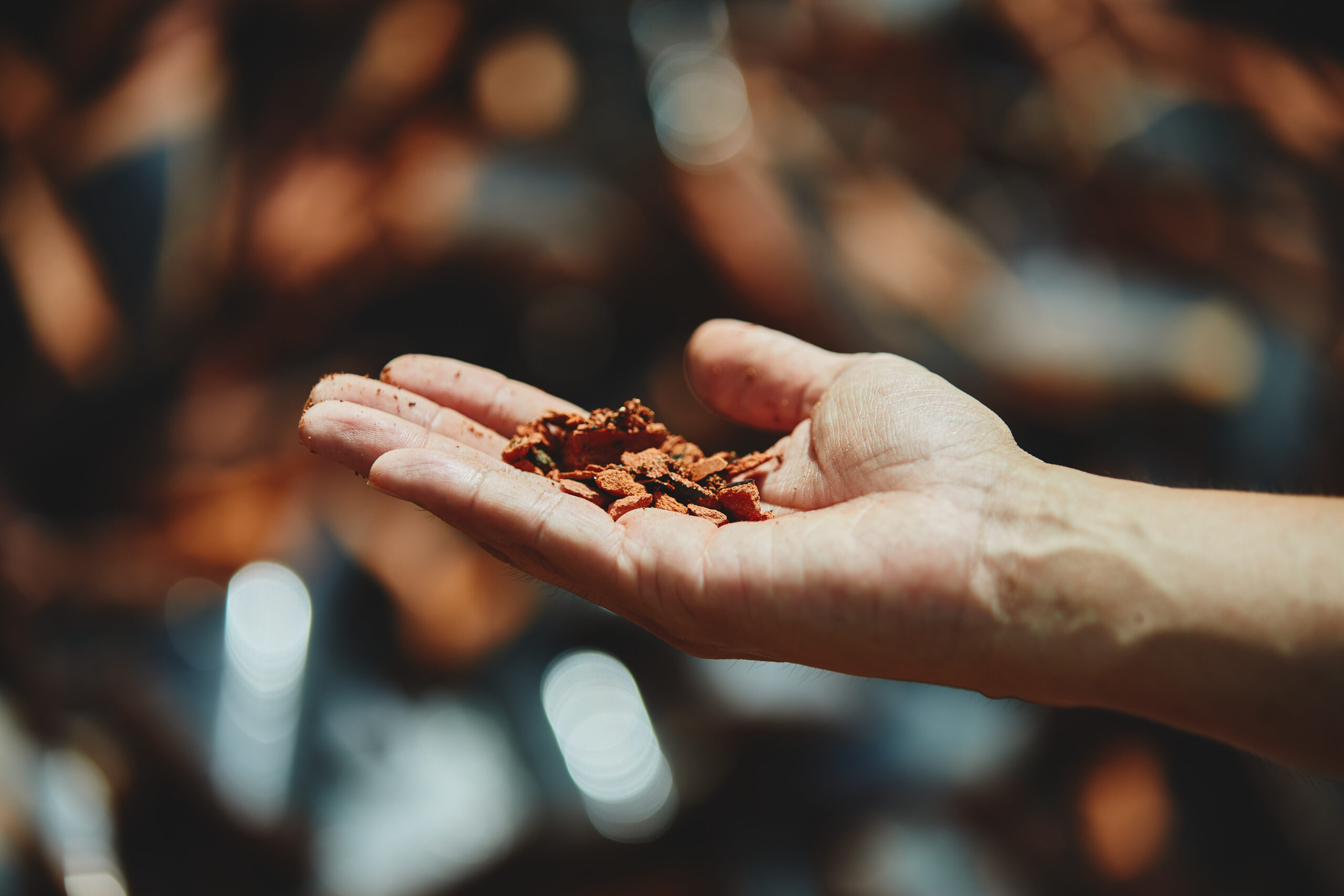
CACL Inc.
https://cacl.jp/
Based in Nomi City, Ishikawa Prefecture—renowned for its Kutani ware—CACL operates at the intersection of two challenges: the shortage of successors in traditional crafts and the limited, low-wage employment options for people with disabilities. To address these issues, the company has developed projects that combine traditional craftsmanship with inclusive employment. Following the 2024 Noto Peninsula Earthquake, CACL launched the Stand with NOTO project, establishing temporary workshops for Wajima lacquerware artisans and creating new jobs as part of recovery efforts. It also initiated the Rediscover Project, an evolved art initiative that incorporates Kutani shards, Suzu ware fragments, and Wajima lacquer techniques, and participated in the 21st Century Museum of Contemporary Art, Kanazawa exhibition “Dancing with All – Ecologies of Empathy.”
In July 2025, CACL launched KAKERA, an experimental brand redefining the value of discarded or non-standard traditional crafts by creating products and materials from ceramic shards and other fragments. The brand’s first collaboration was announced with LVMH Fragrance Brands.
⸻
LIXIL Corporation
Global site: https://www.lixil.com/jp/
LIXIL develops and provides water-related products—such as advanced toilets, bathrooms, and kitchens—and building materials including windows, doors, interiors, and exteriors, designed to solve everyday living challenges and help realize comfortable homes for people around the world. Rooted in a tradition of craftsmanship, LIXIL contributes to better living through world-leading technologies and innovations across its portfolio of iconic brands, including INAX, GROHE, American Standard, and TOSTEM.
With approximately 53,000 employees operating in over 150 countries, LIXIL supports the daily lives of more than one billion people worldwide by offering products designed from the perspective of everyday users.
⸻
Yuko Nagayama & Associates Inc.
https://www.yukonagayama.co.jp/
An architectural design office led by architect Yuko Nagayama, whose work is highly acclaimed both in Japan and internationally.
Major works include: Louis Vuitton Kyoto Daimaru Store, Teshima Yokoo House, Japan Pavilion at Expo 2020 Dubai, JINS PARK, “House with a Membrane Roof,” and Tokyu Kabukicho Tower. Awards include the JIA Newcomer Award (2014), World Architecture Festival 2022 Highly Commended (2022), and iF Design Award 2023 Winner (2023). Current projects include the Panasonic Group Pavilion “Nomono no Kuni” and the “Women’s Pavilion in collaboration with Cartier” at Expo 2025 Osaka, Kansai, as well as the TOKYO TORCH project in front of Tokyo Station.
⸻
For Inquiries
CACL Inc.
Head Office: 56 Ri, Tatsunokuchi-machi, Nomi-shi, Ishikawa 923-1245, Japan
TEL: +81-761-48-8004
Contact form: https://cacl.jp/contact/

